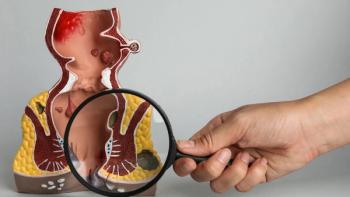
Understanding the Best Practices Associated With CDK4/6 Therapy in Breast Cancer
Dr. Sara M. Tolaney discusses breast practices associated with CDK4/6 inhibitors for the treatment of breast cancer.
At the 42nd Annual Miami Breast Cancer Conference, Dr. Sara M. Tolaney sat down for an interview with CURE to discuss the efficacy and breast practices associated with CDK4/6 inhibitors, highlighting what the role of CDK4/6 inhibitors is in adjuvant therapy for patients with hormone receptor (HR)–positive, HER2-negative breast cancer.
CDK4/6 inhibitors, which were originally proven effective in metastatic HR-positive breast cancer, are now FDA-approved for early-stage cases, reducing recurrence risk. Notably, the choice between these inhibitors depends on factors such as hormone therapy compatibility, offering new hope for improving cure rates in early-stage breast cancer, Tolaney emphasized.
Tolaney works as a breast medical oncologist at Dana-Farber Cancer Institute, where she is the chief of the Division of Breast Oncology, and serves as an associate professor of medicine at Harvard Medical School, located in Boston.
Transcript:
CDK4/6 inhibitors are oral pills that stop the cell cycle, so it takes a cancer cell and puts it to sleep. We found that these drugs are highly effective in women who have metastatic hormone receptor (HR)–positive breast cancer, where, in fact, it was doubling the duration by which their cancer was controlled and allowing them to live longer. [This provides], clearly, huge benefits. It seemed natural to think, “Well, if it's helping patients who have metastatic breast cancer, could it help us cure more patients who have early-stage breast cancers?”
Now we have two different CDK4/6 inhibitors that are FDA approved for patients who have early-stage HR-positive breast cancers. The question then arises: Which one do you choose? We have Verzenio [abemaciclib] and Kisqali [ribociclib]. I don't think there's a clear wrong or right answer here, but in fact, I think it's a little bit more nuanced. Generally speaking, what we're seeing is that these drugs reduce risks of recurrence by about 30%. That's a relative reduction that translates somewhere to a 5% to 8% absolute benefit across these two drugs, clearly, reducing risk a lot.
The Verzenio is given for two years, and it's given with the hormone therapy that patients are receiving, whereas the Kisqali is dosed for three years — so a little bit longer — and also given with the hormone therapy. Although with Kisqali, you cannot take it with tamoxifen, it has to be given with an aromatase inhibitor. Again, incredible to have these two options available because I do think it is allowing us to potentially be curing more patients with early-stage breast cancer.
Transcript has been edited for clarity and conciseness.
For more news on cancer updates, research and education, don’t forget to




